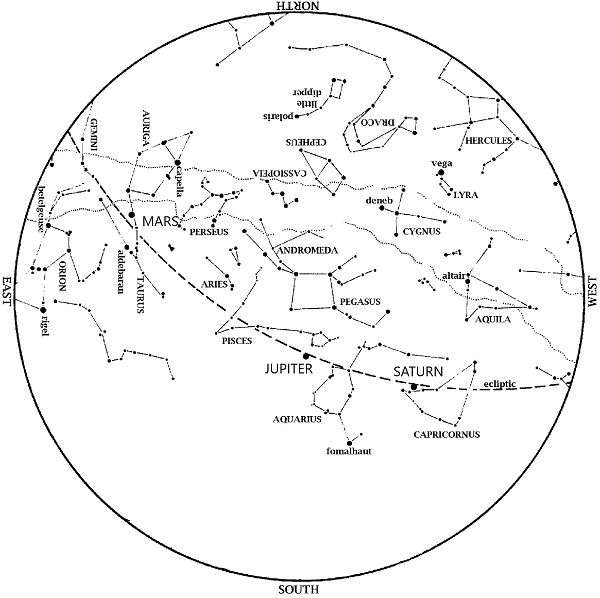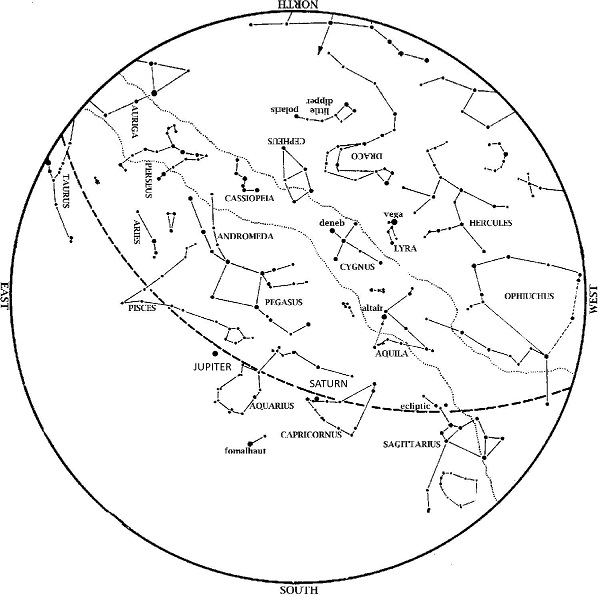Jupiter is now lower in the west at dusk. Face west at dusk and look for the brightest thing there (unless the Moon is also there), as Jupiter outshines all other stars we ever see at night. It appears slightly lower in the sky each night, though, and is gone by the end of the month. As Jupiter leaves the evening sky, Mercury and Venus emerge to join it on Memorial Day weekend. The three planets form a tight triangle May 25-26; Venus and Jupiter are just one degree apart on May 27.
Saturn is now an evening object, shining in the southeast at dusk. Although not as bright as Jupiter, it does outshine the stars around it, so you can’t miss it.
Mars is still out of sight on the far side of the Sun this month.
 A swath of brilliant winter stars sets in the west at dusk. Orion, the Hunter, is still visible in the west as May begins. His two dogs, represented by Sirius and Procyon, are to his left. To Orion’s right is Taurus, the Bull, with Aldebaran as its eye. Gemini, the Twins, are above Orion. The Big Dipper is above the North Star, with its handle pointing to the right. From that handle, you can ‘arc to Arcturus’ and then ‘speed on to Spica’; those stars are in the east and southeast at dusk. Leo, the Lion, passes almost overhead in late evening.
A swath of brilliant winter stars sets in the west at dusk. Orion, the Hunter, is still visible in the west as May begins. His two dogs, represented by Sirius and Procyon, are to his left. To Orion’s right is Taurus, the Bull, with Aldebaran as its eye. Gemini, the Twins, are above Orion. The Big Dipper is above the North Star, with its handle pointing to the right. From that handle, you can ‘arc to Arcturus’ and then ‘speed on to Spica’; those stars are in the east and southeast at dusk. Leo, the Lion, passes almost overhead in late evening.
As Orion and Taurus set, look for Antares, brightest star of Scorpius, the Scorpion, to rise in the southeast. At the same time, Vega, brightest star of the Summer Triangle, appears low in the northeast. These stars remind us that summer is on the way.
Moon Phases in May 2013:
Last Quarter May 2, 6:16 am; May 31, 1:59 pm
New May 9, 7:31 pm
1st Quarter May 17, 11:35 pm
Full May 24, 11:26 pm
The New Moon of May 9 passes in front of the Sun, causing an eclipse. However, the Moon is too far from the Sun to block it completely; the result is an annular eclipse, in which a ring of the Sun’s disk surrounds the Moon. Also, the event is visible only along a path that begins in Australia and extends across the Pacific.
On most clear Saturday nights at the George Observatory, you can hear me do live star tours on the observation deck with a green laser pointer. If you’re there, listen for my announcement. I generally do one such tour on short May nights.
To enjoy the stars in any weather from the comfort of the HMNS Planetarium, click here for a full schedule.






